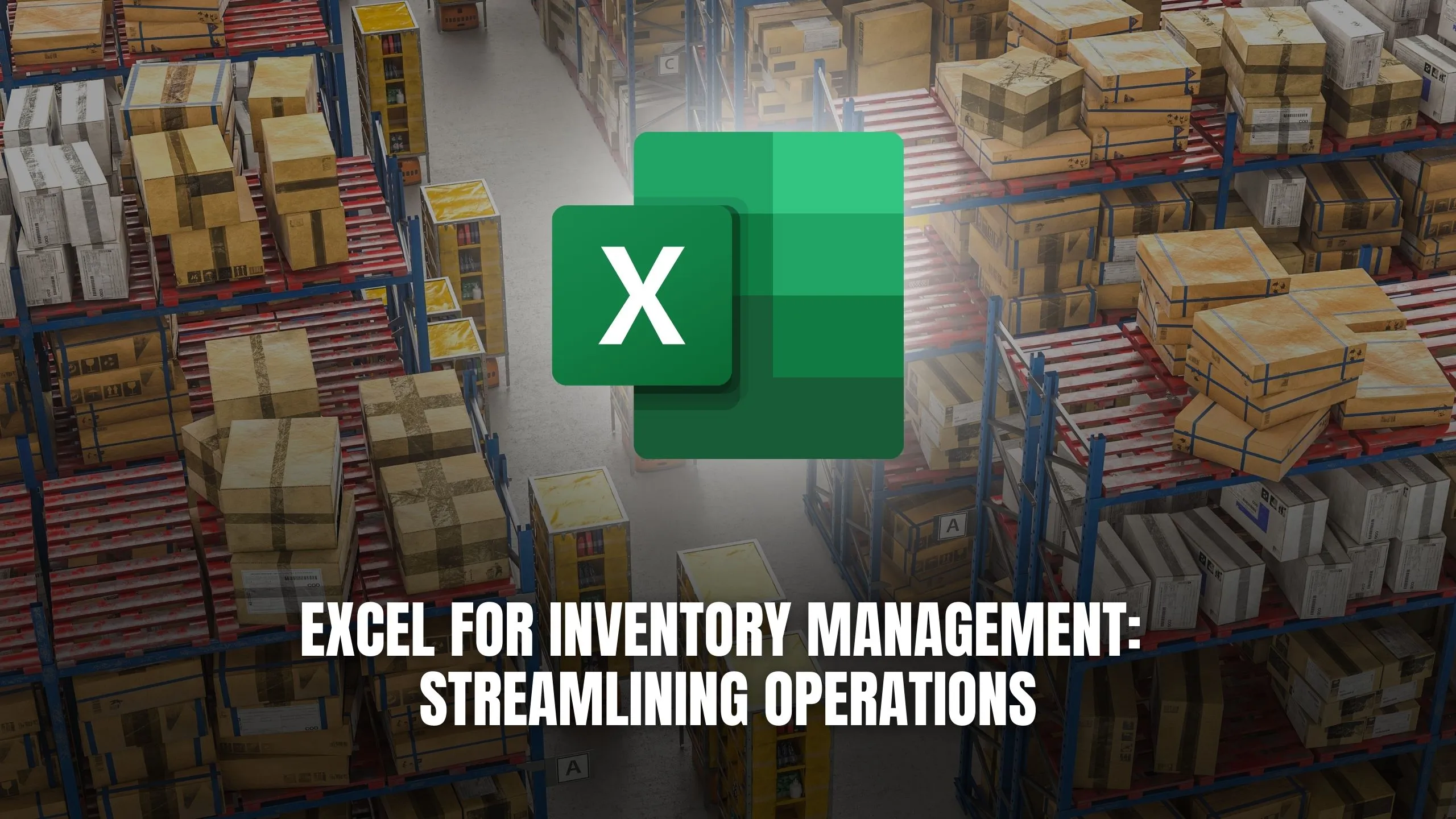Excel for Inventory Management: Streamlining Operations
-


Excel for Inventory Management: Streamlining Operations
In today’s competitive business landscape, effective inventory management is crucial for optimizing operations and maximizing profitability. This blog explores how leveraging Excel for inventory management can streamline processes, enhance efficiency, and drive business growth.
1. Data Organization and Tracking
Excel provides a versatile platform for organizing and tracking inventory data with customizable spreadsheets. By creating dedicated sheets for product details, stock levels, and sales records, businesses can maintain real-time visibility into their inventory status, facilitating informed decision-making and preventing stockouts or overstock situations.
2. Inventory Analysis and Forecasting
Utilizing Excel’s powerful analytical features, businesses can conduct comprehensive inventory analysis and forecasting. By analyzing historical sales data, trends, and seasonality patterns, Excel enables businesses to make data-driven predictions about future demand, optimize stock levels, and minimize excess inventory costs.
3. Automated Reporting and Alerts
Excel offers automation capabilities through macros and formulas, allowing businesses to automate repetitive inventory management tasks. By setting up automated reporting templates and alerts for low stock levels or expiring products, businesses can proactively address inventory issues, improve efficiency, and ensure seamless operations.
4. Integration with Other Systems
Excel integrates seamlessly with other business systems and software, enabling smooth data exchange and synchronization. Whether it’s linking Excel spreadsheets with accounting software, point-of-sale systems, or e-commerce platforms, businesses can streamline inventory management processes and maintain data accuracy across all operational touchpoints.
5. Cost-Effective Solution for Small Businesses
For small businesses with limited resources, Excel serves as a cost-effective solution for inventory management. With no additional software investment required, businesses can leverage Excel’s robust features to effectively manage inventory, optimize resources, and drive growth without incurring significant overhead costs.
Recommended SaaS Products:
- Zoho Inventory: Simplify inventory management with Zoho Inventory’s user-friendly interface and automation capabilities, designed to streamline operations for small businesses.
- QuickBooks Online: Empower your business with QuickBooks Online’s comprehensive inventory management features, seamlessly integrated with accounting and financial tools for efficient business operations.
- Cin7: Enhance efficiency and scalability with Cin7’s cloud-based inventory management software, designed to streamline operations and optimize supply chain processes.
- Fishbowl Inventory: Optimize inventory control and order management with Fishbowl Inventory’s robust features, tailored to meet the needs of growing businesses.
- Ordoro: Streamline your order fulfillment process and automate inventory management tasks with Ordoro’s intuitive platform, designed for e-commerce businesses of all sizes.
Conclusion
Excel remains a versatile and powerful tool for inventory management, offering a range of features to streamline operations, enhance efficiency, and drive business growth. By leveraging Excel’s capabilities for data organization, analysis, automation, and integration, businesses can optimize inventory processes and gain a competitive edge in today’s dynamic marketplace.
Optimize Your Inventory Management with Subscribed.fyi!
Ready to take your inventory management to the next level? Join Subscribed.fyi and unlock exclusive deals on essential SaaS tools that can streamline your operations and drive business growth. Sign up for free today to access savings on inventory management software and other essential resources. Simplify your inventory processes and maximize profitability with Subscribed.fyi!
Relevant Links:





